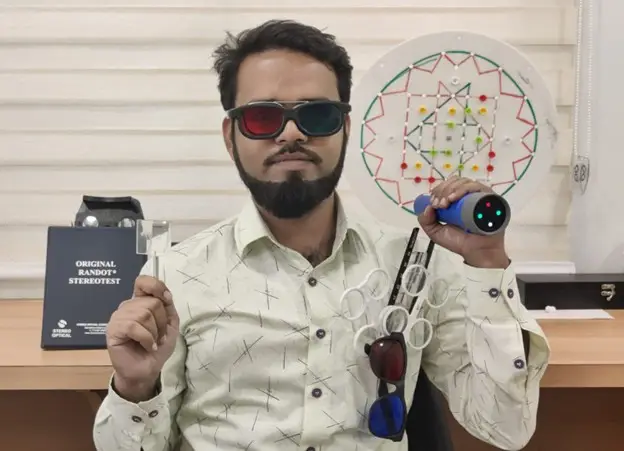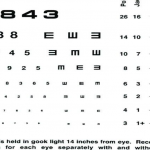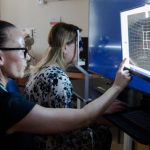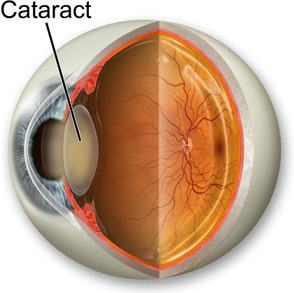Orthoptics is a specialized branch of eye care that focuses on diagnosing and managing binocular vision and eye movement disorders. Optometrists/Orthoptists employ a variety of diagnostic tests to assess visual functions, detect abnormalities, and guide treatment. Let’s delve into the most common tests used in orthoptics and understand how they contribute to diagnosing eye problems.
1. Visual Acuity Testing
Visual acuity tests measure the sharpness or clarity of vision and are the cornerstone of any orthoptic assessment. Commonly, patients are asked to identify letters, numbers, or symbols on charts, such as the Snellen chart or LogMAR chart. For younger children or individuals with communication difficulties, picture-based tests like LEA symbols or Kay’s Pictures are used.
Visual acuity testing detects refractive errors such as:
• Myopia (nearsightedness): Difficulty seeing distant objects clearly.
• Hyperopia (farsightedness): Difficulty focusing on nearby objects.
• Astigmatism: Blurred vision caused by an irregularly shaped cornea.
Poor visual acuity might also indicate amblyopia (lazy eye) or other structural and neurological issues requiring further investigation.
2. Extraocular Motility Testing
This test assesses the function of the six extraocular muscles and their associated cranial nerves by evaluating eye movement in all directions of gaze.
Extraocular motility testing detects:
• Palsies of cranial nerves III, IV, and VI.
• Mechanical restrictions such as thyroid eye disease or orbital fractures.
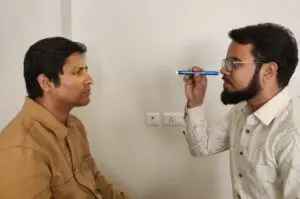
3. Hirschberg Test
This simple test assesses the corneal light reflex to determine ocular alignment. A light source is directed at the patient’s eyes, and the reflection’s position on the cornea is observed.
The Hirschberg test provides a quick and non-invasive estimate of ocular deviation, particularly in young children or uncooperative patients.
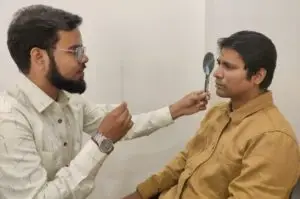
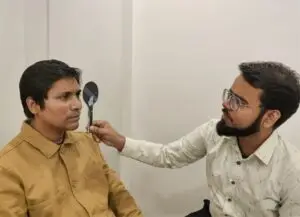
4. Cover Test
The cover test evaluates ocular alignment and identifies strabismus (eye misalignment). The test involves alternately covering each eye while the patient focuses on a fixed target. Observing the movement of the uncovered eye helps detect deviations such as:
• Esotropia: Inward turning of the eye.
• Exotropia: Outward turning of the eye.
• Hypertropia/Hypotropia: Vertical misalignment of the eyes.
The cover test distinguishes between latent misalignment (heterophoria) and manifest strabismus. This information is critical for tailoring interventions, including vision therapy or surgical correction.
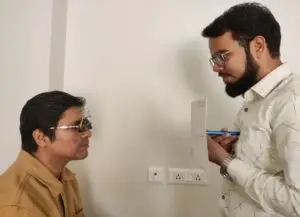
5. Maddox Rod and Wing Tests
These subjective tests evaluate ocular alignment and detect small misalignments.
• Maddox Rod Test: Uses a series of red lines seen through a cylindrical lens to detect vertical or horizontal deviations.
• Maddox Wing Test: A handheld device that measures small misalignments at near.
These tests provide precise measurements of phorias and tropias, guiding treatment plans for alignment issues.
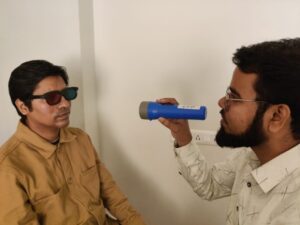
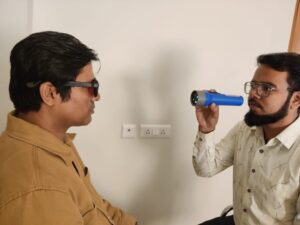
6. Fusion and Suppression Tests
Tests like the Worth Four Dot Test or Bagolini Striated Lens Test evaluate the ability of the eyes to fuse images and detect suppression, where one eye’s input is ignored to avoid double vision.
It helps to diagnose
• Fusion deficits may signify poor binocular coordination.
• Suppression indicates the brain’s adaptation to avoid diplopia (double vision), often seen in strabismus or amblyopia.
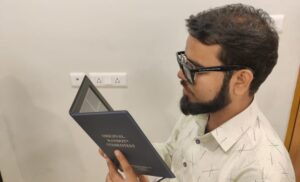
7. Stereopsis Testing
Stereopsis, or depth perception, relies on binocular vision. Tests like the Titmus Fly, Randot Stereotest, or Lang stereotests present three-dimensional images to evaluate the ability to perceive depth.
Deficits in stereopsis indicate disruptions in binocular vision due to conditions such as strabismus or amblyopia. Early detection allows for timely intervention to restore depth perception and binocular function.
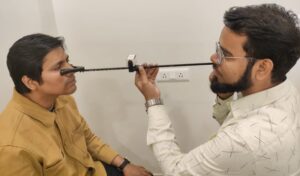
8. Accommodation Testing
Accommodation is the eye’s ability to focus on near and distant objects. Tests like the RAF rule, dynamic retinoscopy, or near-point of accommodation (NPA) measure this function.
Accommodation testing diagnoses issues such as:
• Accommodative insufficiency: Difficulty focusing on near objects.
• Accommodative excess or spasm: Inability to relax focus.
• Presbyopia: Age-related decline in near focusing ability.
9. Amplitude of Accommodation
This test measures the maximum focusing ability of the eyes using a target moved closer until it blurs.
Assessing amplitude helps identify reduced accommodative function, which can affect near work performance and indicate underlying conditions.
10. AC/A Ratio
The accommodative convergence to accommodation (AC/A) ratio measures the relationship between the amount of focusing effort and the resulting eye alignment changes.
An abnormal AC/A ratio can help diagnose conditions such as:
• Convergence excess: High AC/A ratio.
• Convergence insufficiency: Low AC/A ratio.
11. Near Point of Convergence (NPC)
NPC evaluates the closest point at which the eyes can maintain binocular focus on a near object.
• Diagnoses convergence insufficiency, a common cause of eyestrain and reading difficulties.
• Measures recovery of convergence after sustained near work.
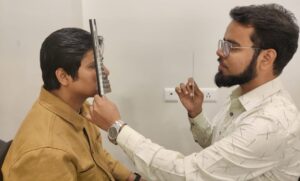
12. Positive and Negative Fusional Vergence
Fusional vergence tests measure the eyes’ ability to maintain single binocular vision when prism lenses are used to induce misalignment.
• Positive Fusional Vergence (PFV): Eyes converge to overcome a base-out prism.
• Negative Fusional Vergence (NFV): Eyes diverge to overcome a base-in prism.
Assessing PFV and NFV identifies:
• Reduced vergence reserves, leading to symptoms like eyestrain or double vision.
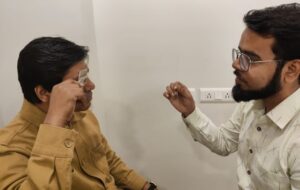
13. Vergence Facility Testing
Vergence facility evaluates the speed and efficiency of vergence movements using alternating base-in and base-out prisms.
How It Helps
• Detects deficiencies in dynamic vergence response.
• Helps diagnose issues like convergence insufficiency or poor vergence adaptation.
Optometrists/Orthoptists rely on these diverse diagnostic tests to create a comprehensive understanding of a patient’s visual and binocular function. Early detection and precise diagnosis are essential to prevent long-term complications and ensure effective treatment. Whether it’s addressing a child’s amblyopia or managing an adult’s double vision, these tests are the cornerstone of eye health in orthoptics.

